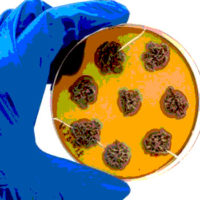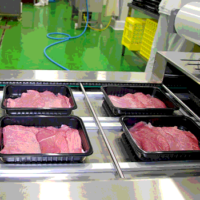A Closer Look at Food Safety in Canada

It’s no secret that Canada’s food system is more complex than ever.
Major changes in production and distribution environments have resulted in elaborate and extensive supply chains. Consumers are demanding diverse, innovative food choices and more information about the products they consume. As industry adjusts to this reality, governments around the globe are also modernizing their systems and approaches to be more flexible and outcome based. These efforts are coupled with a more rigorous risk management system and a stronger focus on traceability by regulators.
The case for change is compelling. That’s why we’re moving swiftly here at the Canadian Food Inspection Agency (CFIA) and consulting our stakeholders on all aspects of a broad transformation.
Stronger Food Safety Rules
A solid foundation begins with strong rules. The Safe Food for Canadians Act (SFCA), approved by Parliament in November 2012, establishes a modern and robust legislative framework for the safety of all food commodities. The act will come into force with the adoption of new regulations. It marks the first step in the transformation of Canada’s food safety system.
This act is a big deal not only for the CFIA, but also for industry and consumers. Once it’s in force, two federal legislative regimes will apply to food in Canada: the Food and Drugs Act and Regulations, and the SFCA and Regulations. The result will be a streamlined and comprehensive set of legislative tools focused on prevention and enhanced capacity to respond to food safety incidents when they happen.
Although the existing food safety system has served us well, the SFCA provides the authority to strengthen it by requiring that importers, exporters and domestic producers have plans in place for anticipating issues and controlling hazards like contaminants. As a result, we anticipate a more level playing field across sectors, enhancement of risk-based inspections and a reduced level of duplication and complexity. Industry will see benefits in the form of more flexible, outcome-based regulations that allow for innovation. That means businesses will have the ability to develop systems that meet their unique operational needs while ultimately achieving the desired safety results.
While transitioning to new regulatory requirements should be a smooth process for businesses currently meeting requirements under existing CFIA acts, there will certainly be adjustments for some sectors and businesses, specifically micro- and small-size businesses. As a modern regulator, CFIA appreciates that fostering early awareness and understanding of regulatory requirements will be key in generating compliance.
Compliance Promotion
Industry is expected to be aware of, understand and comply with legislative and regulatory requirements.
Compliance is not only the law, but it is also good for business. It is also integral to the protection of Canadians’ health as well as our plant and animal resources. CFIA realizes that access to relevant and up-to-date information on regulatory requirements is needed to help businesses comply. That’s why we’ve developed a compliance promotion strategy aimed at increasing awareness, improving understanding and fostering continuous improvement.
Along the way, some businesses may face a number of challenges like insufficient technical knowledge or limited resources. These constraints could make it difficult to comply with regulatory requirements, especially for micro- and small-size businesses. With new regulations on the horizon, understanding the rules and having access to support is even more important. We’re doing our part to tackle this issue by more clearly explaining food safety rules, making use of interactive technologies, providing access to tools and training, and enhancing our openness and transparency activities.
A good example is the Industry Labeling Tool, which provides clear guidance to businesses on labeling rules.
Food labeling is one of the most important links between industry and consumers. Labels give consumers important information to help them make informed decisions. For industry, labels communicate and promote the characteristics of the food they’re marketing and selling. Food labels are a powerful tool; getting this information right is not only the law but also good business.
The Industry Labeling Tool’s primary goal is to improve industry’s access to clear and simple information on food labeling requirements. It serves as a single point of reference for food labeling requirements and replaces the cumbersome Guide to Food Labeling and Advertising and the Labeling and Advertising Decisions web page. The tool explains which food products require a label and outlines the general principles for labeling and advertising. It also includes a checklist to guide users through core labeling requirements, which can be quite helpful for small businesses facing time and resource pressures.
Leveraging Private Certification Systems
Regulatory standards are mandatory criteria established by law or regulation. Private certification systems are formal, documented procedures, developed and administered by the private sector for attaining specific objectives and outcomes.
Private certification systems can play a key role in helping achieve regulatory objectives, provided they are effective, credible and aligned with public policy objectives. They typically involve audits and certification. Frequently incorporated into supply chain contracts to ensure that suppliers provide products of consistent safety and/or quality, private systems are sometimes developed collectively by industry organizations. This approach has the advantage of cost sharing and minimizing the number of individual systems a sector is required to meet.
While CFIA will retain its responsibilities for verifying compliance with regulatory requirements, there is increased recognition that private certification can be factored into models where regulatory oversight is allocated based on risk. As such, private certification systems could minimize inefficiencies, reduce cost redundancies and help the government refine its regulatory programming.
To that end, CFIA is exploring how to enhance its approach to risk-based oversight by assessing industry’s use of private certification systems. This aligns with the proposed Improved Food Inspection Model, which outlines how CFIA intends to take a more structured approach to oversight.
Oversight Based on Level of Risk
CFIA, like similar regulatory agencies in the world, uses scientific knowledge and risk analysis to inform its inspection activities. The primary role of an inspector has been, and will continue to be, to verify industry’s compliance with regulatory requirements. But how this is done has changed significantly over the past 15 years.
As part of its modernization efforts, CFIA will take a more targeted approach to allocating its resources without compromising food safety. A framework has been developed to provide a standard and consistent approach to oversight activities based on prevention and risk. These activities include but are not limited to inspections, audits, directed sampling and testing, and surveillance.
A more structured approach to analyzing risks related to different food commodities will be taken by regularly updating food commodity risk information and applying this approach across all food commodities. CFIA will also add a common systematic approach to assess preventive control plans and track records of regulated parties to determine whether inspection activities must be adjusted. For example, once a regulated party has established a compliance history, the intensity of inspection and/or methods of inspection may be adjusted to correspond with how effectively the regulated party has prepared safe and compliant food. CFIA would rank food-hazard combinations from high to low in how likely they are to pose a public health impact.
Using this model, CFIA will take a consistent, predictable and transparent approach to its oversight activities. If enforcement actions are necessary, these too will be guided by a single, consistent compliance and enforcement approach.
All of these changes reflect very clearly industry’s responsibility to produce safe food and CFIA’s responsibility to verify regulatory compliance. Stronger rules, a greater understanding of these rules, preventive systems and risk-based oversight all contribute to a more rigourous food safety system.
Food for thought: At the end of the day, food safety is a collective responsibility. It’s Canada’s food safety system—meaning it’s yours as much as it is ours.
Paul Mayers is the vice president of the Policy and Programs Branch at CFIA.
Looking for a reprint of this article?
From high-res PDFs to custom plaques, order your copy today!





